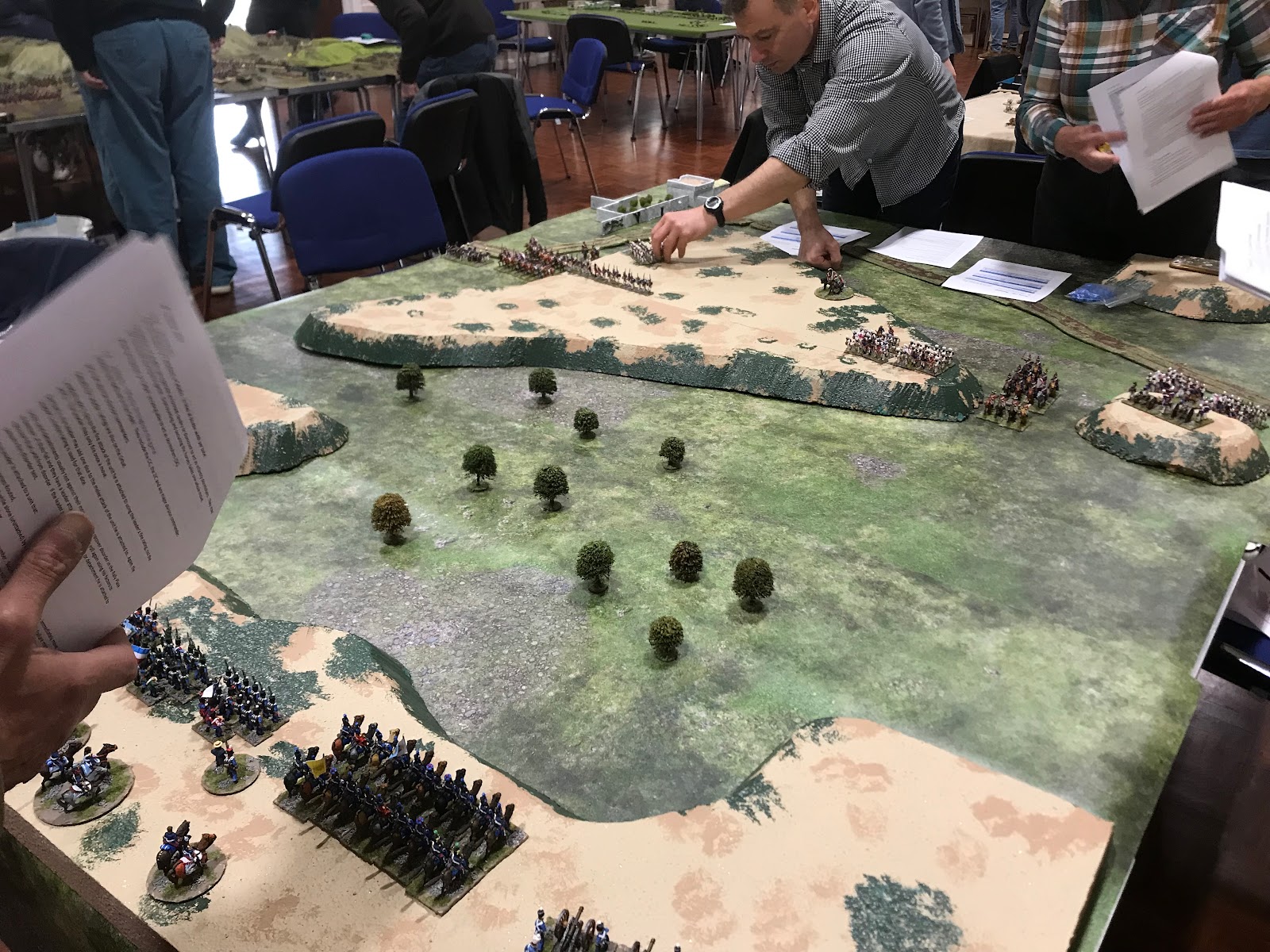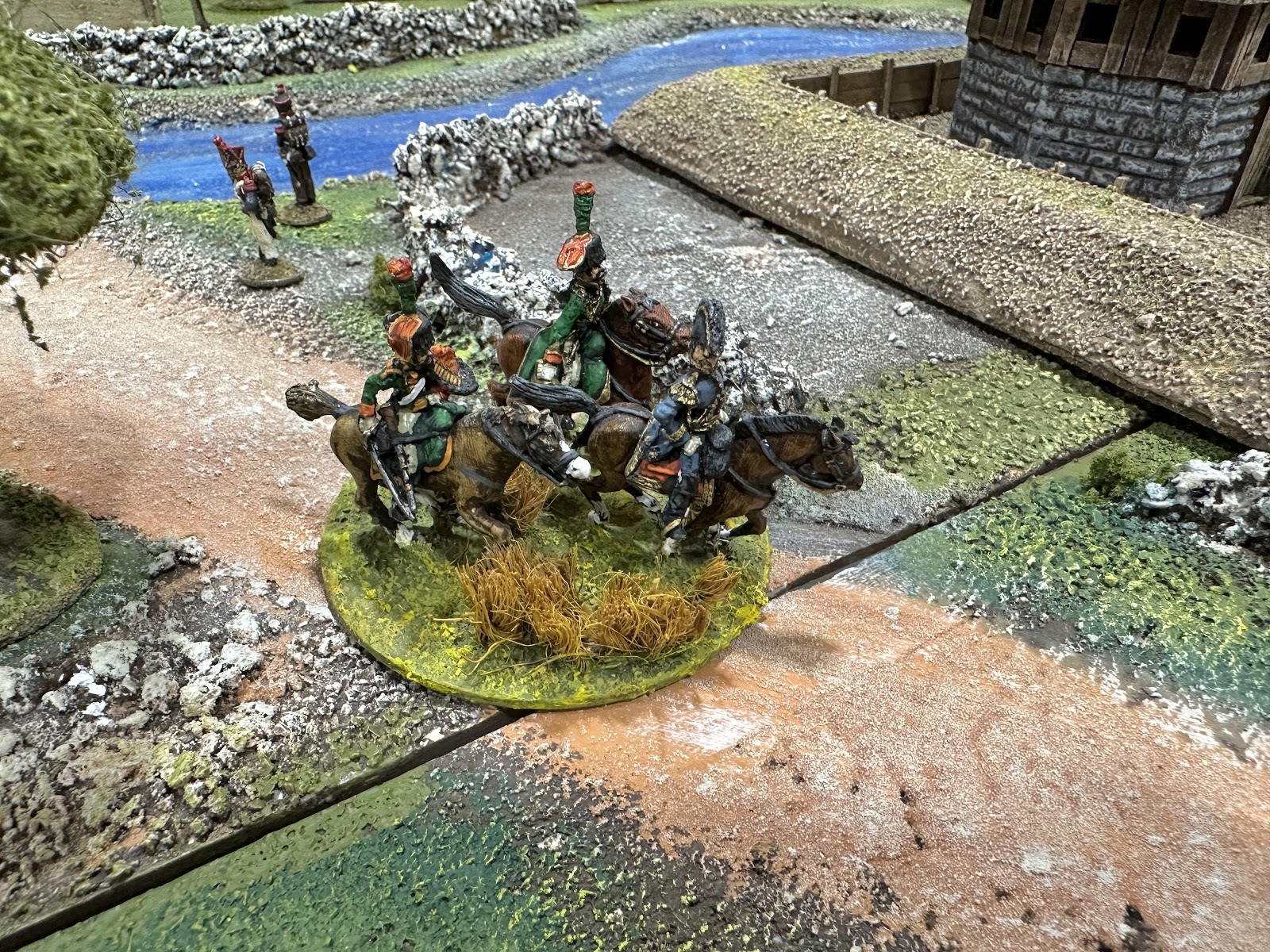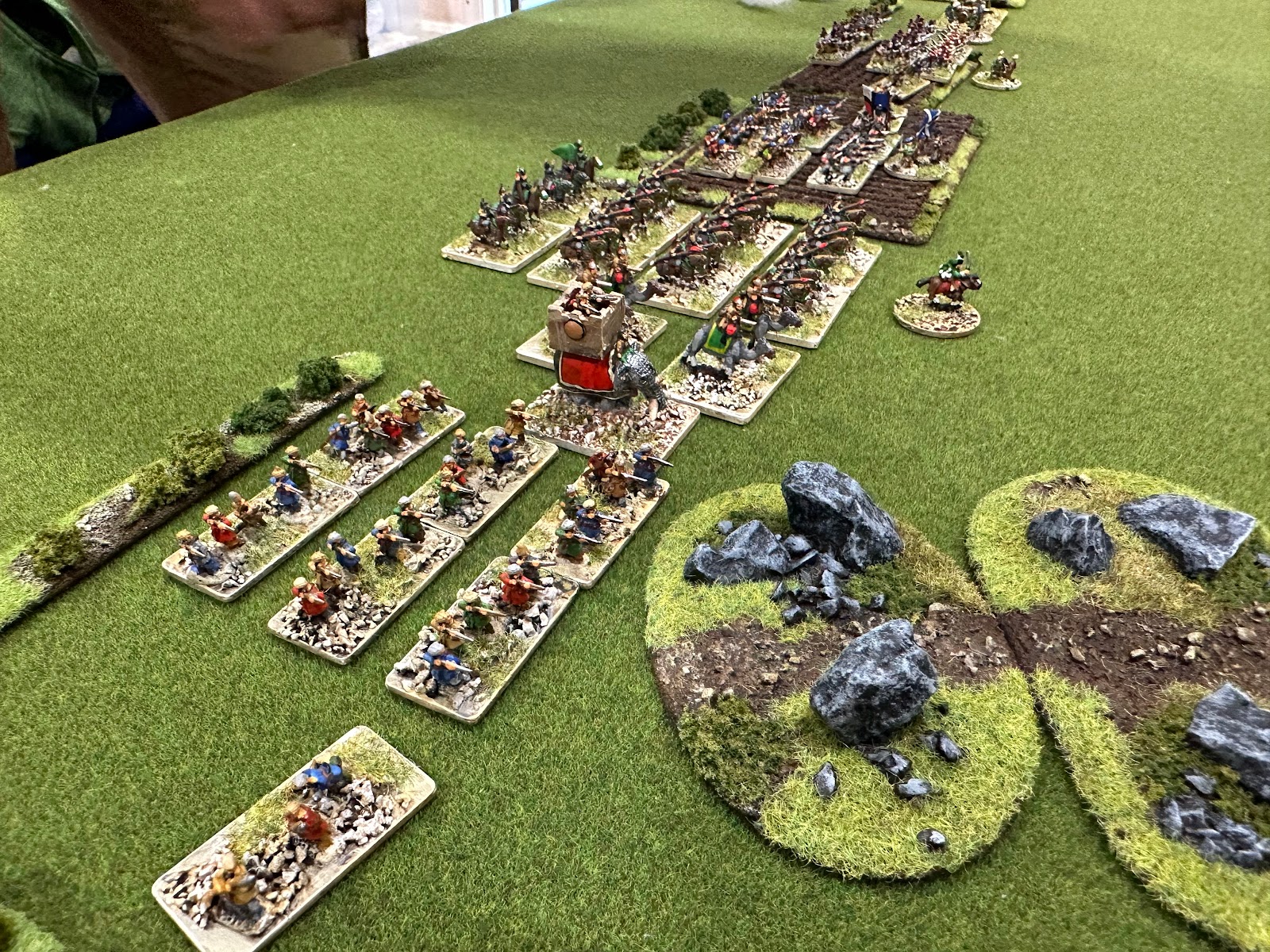So, a few weeks ago, I headed over to Roy's full of anticipation for a WW2 game set in the Western Desert. I had been working on my WRG-derived rules - I had recently checked over all the gun and armour stats and had even come up with a fancy alternate activation scheme for the turn sequence. What could possibly go wrong?
The day actually started very well. Roy had a pile of box files waiting, extracted from the depths of his Alladin's Cave of a wargames room, and I had the pleasure of picking out the forces I thought would make an interesting game. We threw history to the wind and went for a Flames of War-style tank punch-up set in 1942, with minimal infantry and just a battery of supporting artillery on each side. The table was 6' x 4'. The forces were:
British - Force HQ: Dorchester ACV
Crusader tank company: HQ (Crusader III) plus 3 platoons each of 3 x Crusader III
Grant tank company: HQ (Grant) plus 2 platoons each of 3 x Grant
Carrier platoon: in 6 x Universal Carriers
Recce section: 2 x Humber II
Artillery: 4 x 25pdr off-table plus AFO
German - Force HQ: Sdkfz 250 with Rommel impersonator
Panzer company: HQ Pz. III (kurz 50mm), platoon of 4 x Pz. IVG, platoon of 4 x Pz. III (lang 50mm),
platoon of 4 x Panzer III (kurz 50mm)
Infantry platoon: in 4 trucks, plus towed 88mm Flak 36 and towed 50mm Pak 38
Anti-tank section: 2 x Diana SP 76.2mm
Anti-aircraft section: 2 x SP AA 20mm
Artillery: 4 x 10.5cm LeFh off-table plus AFO
The British had 17 tanks to the Germans 13, but the latter had some powerful anti-tank gun support. The models were 15mm-1/100th scale.
We deployed by alternate platoons, and then set to. The action was quickly under way, and proved deadly - rather too deadly, in fact. But before some analysis, here are some snaps of the game:
 |
| Roy took the Brits - Crusaders to his left, Grants to his right. |
 |
The cracking Diana models - or to be more accurate, the two
7.62cm FK36(r) auf Panzerjäger Selbstfahrlafette Zugkraftwagen 5t (Sd.Kfz. 6/3). |
 |
The Grants get going in the foreground.
Their thicker armour was useful, but 2 were soon knocked out. |
 |
| But by move 4 the Pz.III (kurz) platoon had been wiped out... |
 |
| ...as had the platoon of Pz.III (lang). Plus half of the PzIVs! |
 |
2 or 3 Crusaders had also been destroyed, but my Rommel impersonator had little
choice but to call it a day. A game that seemed to be over before it had really started. |
Truth be told, it had not been much of a game. It wasn't hard to see why. A stationary Crusader with a 6pdr could hit on a 2 up to 500m, then a 3 up to 750m (the usual battle ranges). Against a Panzer III, a knock out was automatic if hit. So tank knock outs were just too easy and predictable, even if the stats stood up historically. Firing from the other direction was slightly more difficult, with even the long 50mm gun rated slightly weaker than the 6pdr, but knock outs were still pretty easy.
This was a result of not seeing the wood for the trees. I had gone over the stats repeatedly with my reference material, but the consequences during a game had eluded me. Most of my games had been set in Poland 1939, where the tanks are mostly just armoured cars with tracks, so easy knock outs are expected. Not so later in the war. This was also the first time I had tried a real tank-heavy engagement, popular with many gamers but a rare occurence in real life. So this had been a valuable play-test. But how to solve the problem?
The Phil Barker mechanic for deciding whether AFVs are knocked out was quirky and original, and I had decided to keep it as part of the character of the rules. For those not familiar, it consists of a table with most WW2 tank and anti-tank weapons down one side, and the six armour classes (later increased to 8) along the top. A typical cell has a range band and a number - '4 at 500-1000m', for example. This means that a particular gun, firing at that particular armour, will knock-out automatically at under 500m, knock-out on a roll of 4 or more at 500 to 1000m range, and be ineffective at over 1000m. Also, quite a lot of cells say 'All K-O' or No K-O'. The system was refined a little in rule books after 1973, but the basic mechanic was retained. It might be of interest to show an extract, pictured below:
 |
| © WRG 1973. |
One obvious option was to just go through the table I was using and alter all the stats to make things a bit less deadly. But I quickly began to think about ditching the system in its entirety. It was rather inflexible and lacked nuance - it was usually a choice between no knock out possible, a 50-50 chance of a knock out, or an automatic knock out if hit. It had also become apparent that fitting particular AFVs into one of the 6 classes could be tricky when they were on the cusp between the parameters for one class and the next.
My decision was to change to a much more well-used and familiar system - attack and defence values, which I had first encountered in Donald Featherstone's War Games from 1962. I had been tempted to make this change from the outset, but respect (and nostalgia) for Mr Barker's concept had held me back. But now it was time for the change. No need for armour classes - each AFV could have a defence value number that represented my best guess at the strength of its armour, whether front, side or rear. And similarly for guns - the attack value number at any particular range (and with any particular ammo type) could be tailored as required.
There are a variety of ways the system can be used, but I went for that described by Charles Grant in his 1970 book Battle - Practical Wargaming. Look up the attack value at the appropriate range, add the sum of 2 D6, and the total must exceed the defence value of the tank's armour to knock it out. If not knocked out, the tank remains 'neutralised' (i.e. suppressed) as a result of being hit, as with the original WRG rules.
The good news was, I had a specimen system already available from my own adaption of the Charles Grant rules, which I had used for many years back in the 1970s and 80s. A few hours work and I had my attack and defence value tables done. Interestingly, I checked the probabilities of various knock-outs with my most recent set of commercial rules (the Battlegroup series, which use a very similar system) and found a reasonable match. So I'm going with this change. Rolling 2 dice is somehow rather more satisfying than rolling just one, which is an additional bonus. The inevitable tweaking of probabilities that will take place in the future will be much easier with the new system. All other firing rules from the WRG system remain in use, although I once again adjusted the hit probabilities to make hits just a little less likely.
As an example, to knock out one of those Panzer IIIs pictured above with a 6pdr will now need a hit roll of 2 up to 250m range, then 3 for up to 500m, then a 4 for up to 1000m. For a frontal attack, the attack value of a 6pdr at 500-1000m is 5, the defence value of a Panzer IIIH is 11, so a roll of 7 with 2D6 is required to knock-out, a probability of 58% in favour. Naturally, as the range shortens this probability increases.
As with so many things in rule writing, I have once again been taught that getting the 'feel' right for a satisfying game is more important than a spurious 'accuracy' which says that if this gun could penetrate this armour at this range, then a knock-out will always result, whether in real life or on the gaming table.
By the way, the alternate activation system seemed to work quite well, replacing a standard IGO-UGO arrangement with one where units from each side take their 'bound' alternately. That is, in the game described, a German unit fires and moves, then a British unit fires and moves, and so on. It seems a bit more modern (I might even say a bit more 'on trend' for 21st century gaming), and gives more of the feel of real battle where punches are traded in quick succession. Plus, the choice of what order to activate your units gives a little more tactical choice.
I hope this hasn't all been too tedious for readers. Perhaps this kind of detail may be of interest to some of you. And of course, this blog is for me as much as you, recording my adventures and decisions in this strange hobby.
Roy has foolishly agreed to a re-match, so with luck we will have another, rather more enjoyable, game with the same lovely models. I will endeavour to report back.
'Til next time!






















































